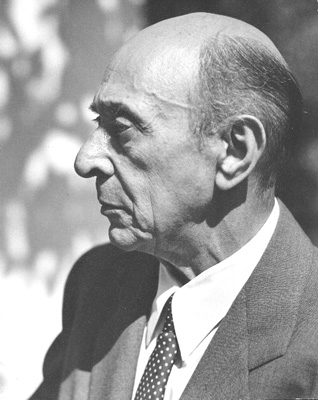Introduction
Twelve-tone technique—also known as dodecaphony, twelve-tone serialism, and (in British usage) twelve-note composition—is a method of musical composition devised by Austrian composer Arnold Schoenberg (1874–1951). The technique is a means of ensuring that all 12 notes of the chromatic scale are sounded as often as one another in a piece of music while preventing the emphasis of any one note through the use of tone rows, orderings of the 12 pitch classes. All 12 notes are thus given more or less equal importance, and the music avoids being in a key. The technique was influential on composers in the mid-20th century.
Schoenberg himself described the system as a “Method of composing with twelve tones which are related only with one another.” It is commonly considered a form of serialism.
Schoenberg’s countryman and contemporary Josef Matthias Hauer also developed a similar system using unordered hexachords or tropes—but with no connection to Schoenberg’s twelve-tone technique. Other composers have created systematic use of the chromatic scale, but Schoenberg’s method is considered to be historically and aesthetically most significant.
Tone Row
Listen: “Sehr langsam”
Please listen to the following audio file to hear a sample of “Sehr langsam” from String Trio Op. 20 by Anton Webern, an example of the twelve-tone technique, a type of serialism.
The basis of the twelve-tone technique is the tone row, an ordered arrangement of the twelve notes of the chromatic scale (the twelve equal tempered pitch classes). There are four postulates or preconditions to the technique which apply to the row (also called a set or series), on which a work or section is based:[17]
- The row is a specific ordering of all twelve notes of the chromatic scale (without regard tooctave placement).
- No note is repeated within the row.
- The row may be subjected to interval-preserving transformations—that is, it may appear in inversion (denoted I), retrograde (R), or retrograde-inversion (RI), in addition to its “original” or prime form (P).
- The row in any of its four transformations may begin on any degree of the chromatic scale; in other words it may be freely transposed. (Transposition being an interval-preserving transformation, this is technically covered already by 3.) Transpositions are indicated by an integerbetween 0 and 11 denoting the number of semitones: thus, if the original form of the row is denoted P0, then P1 denotes its transposition upward by one semitone (similarly I1 is an upward transposition of the inverted form, R1 of the retrograde form, and RI1 of the retrograde-inverted form).
(In Hauer’s system postulate 3 does not apply.)
A particular transformation (prime, inversion, retrograde, retrograde-inversion) together with a choice of transpositional level is referred to as a set form orrow form. Every row thus has up to 48 different row forms. (Some rows have fewer due to symmetry; see the sections on derived rows and invariance below.)
Example
Suppose the prime form of the row is as follows:

Then the retrograde is the prime form in reverse order:
The inversion is the prime form with the intervals inverted (so that a rising minor third becomes a falling minor third, or equivalently, a rising major sixth):

And the retrograde inversion is the inverted row in retrograde:

P, R, I and RI can each be started on any of the twelve notes of the chromatic scale, meaning that 47 permutations of the initial tone row can be used, giving a maximum of 48 possible tone rows. However, not all prime series will yield so many variations because transposed transformations may be identical to each other. This is known as invariance. A simple case is the ascending chromatic scale, the retrograde inversion of which is identical to the prime form, and the retrograde of which is identical to the inversion (thus, only 24 forms of this tone row are available).

Figure 2. Prime, retrograde, inverted, and retrograde-inverted forms of the ascending chromatic scale. P and RI are the same (to within transposition), as are R and I.
In the above example, as is typical, the retrograde inversion contains three points where the sequence of two pitches are identical to the prime row. Thus the generative power of even the most basic transformations is both unpredictable and inevitable. Motivic development can be driven by such internal consistency.
Candela Citations
- Twelve-tone technique. Located at: http://Wikipedia. Project: http://en.wikipedia.org/wiki/Twelve-tone_technique. License: CC BY-SA: Attribution-ShareAlike

